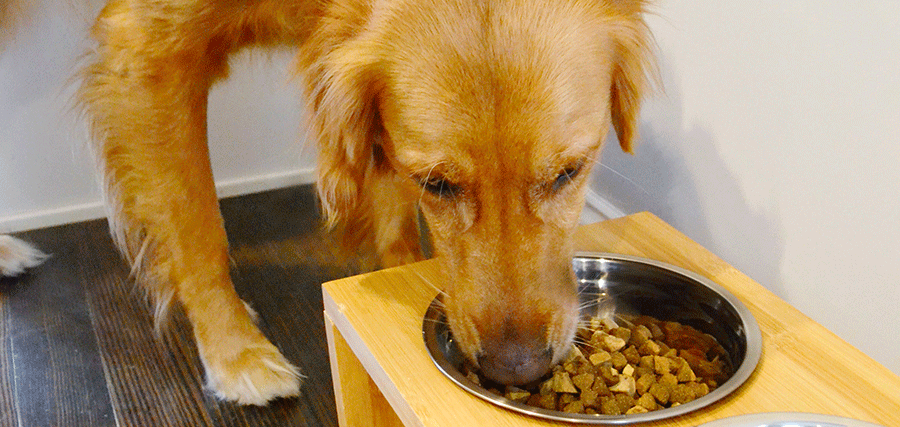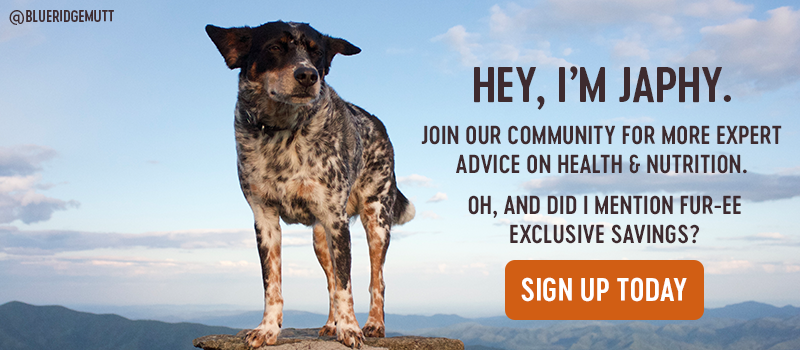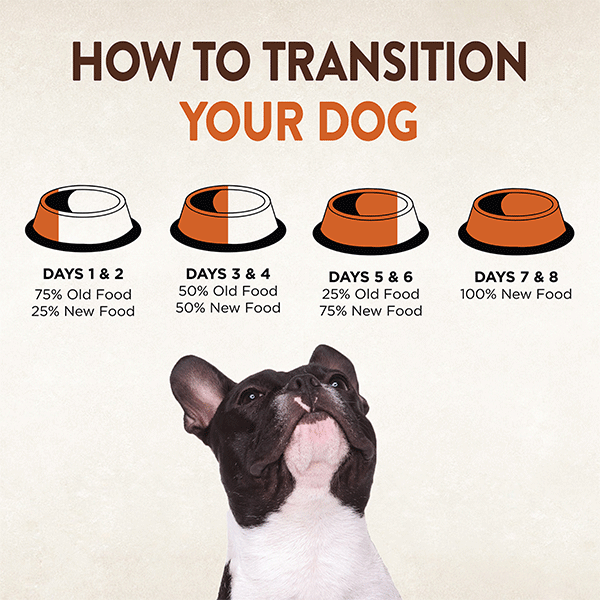How to Feed Your Dog a Healthy High Protein Diet

Nearly all pet parents agree when it comes to feeding their dog, protein is one of the most important ingredients they need to look for when selecting the best food for their dog. But are all proteins the same? Should you feed a high protein dog food? What is considered high protein? Should you only look at the amounts of raw meat ingredients or is the guaranteed analysis amount of Crude Protein that is more important? And what does protein in a dog’s body get used for? Let’s cut through the confusion:
How much protein do dogs need?
Technically, only 18%. According to the Association of American Feed Controls (AAFCO) who determine the minimum requirements for nutritional adequacy when it comes to formulating canine nutrition, the adult maintenance minimum that dogs need to survive is just 18% Crude Protein and 22.5% Crude Protein for dogs that are growing or reproducing. But providing a diet that exceeds these minimum amounts of Crude Protein is one way of ensuring that dogs don’t just survive, but that they are eating nutrition that truly can make them thrive.
What is considered a high protein dog food?
There is no hard and fast number when it comes to classifying products as being high protein nutrition but there are a couple points to consider. Firstly, always compare diets by the guaranteed analysis, this is the chart on the back of the pack that tells you what levels are in the finished product. This chart is the best way to compare apples to apples and avoid the confusing marketing claims on the front of the packs. Most premium diets contain around 22-28% Crude Protein. As a high protein offering, this amount in the guaranteed analysis can increase between 30-37% Crude Protein.
Why is feeding a high protein dog food is important and healthy for your dog?
When high quality meat-based proteins such as turkey, chicken or salmon are included at increased amounts into a dog’s diet this can deliver nutrition that is tailored to how a dog was meant to eat to vitalize their wellbeing:
- As a key macro nutrient, dietary protein is essential for the growth and for the maintenance of almost all tissues in a dog’s body.
- Protein works to supply the amino acids necessary for the dog’s body to build hair, skin, muscles, cartilage, tendons and ligaments
- Protein makes up the enzymes that drive all metabolic reactions, the hormones that act as the body’s chemical messengers and antibodies that comprise the immune system to help keep dogs healthy.
- Protein helps ensure a soft and shiny coat, lean, strong muscles and strong immune systems
- Protein helps your pup love every bite of their food to ensure bowls are always empty.
When meat rich proteins are included in higher amounts in dogs’ diets, a dog will not only look great but feel great too.
What is a good brand when selecting a high protein dog food?
Feeding a diet rich in meat protein helps promote the optimal health of all dogs from the timid Teacup Chihuahua to the burley Great Dane. When high meat is combined with a moderate fat level and a lowered amounts of grain free carbohydrates the result is perfectly balanced nutrition ensuring a dog can thrive in all life stages from an active puppy to a sedentary senior.
Now, this approach is different to brands that claim to feed your dog like a Wolf. Whilst these diets are high in protein, they may also be combined with high fat levels. These high fat levels were crucial for wolves to fuel their highly active lifestyle as well as ensure they survived the harsh times of famine. Today though, our dogs not only look very different from a wolf, but they are far less active. So, whilst protein remains a very important dog food ingredient, we need to make sure the fat levels are not too high.
Wellness CORE delivers natural, superior protein-rich, nutrition that’s specifically crafted for modern dogs to thrive. Featuring fresh meat and concentrated meat sources as our key ingredients, every CORE recipe is combined with moderate amounts of fat, low carbohydrates and a unique blend of wholesome fruits and vegetables, superfoods, botanicals and nutritional supplements to be the best meat-based nutrition available.
Are there any dogs that shouldn’t eat a high protein dog food?
One of the biggest myths in relation to higher protein diets is that they can be unsafe for large breed puppies, older dogs and overweight dogs. In all three cases these myths have been disproven by sound, robust and continual scientific studies.
Protein FACT #1: There is no direct link that protein contributes to musculoskeletal growth disorders in large breed dogs.
Studies have shown that differences in protein intake with levels of 15%, 23% and 32% protein did not affect the occurrence of skeletal development in Great Danes. The bigger culprits that directly correlate with orthopedic problems in large breed puppies are excess calorie intake or increased calcium levels due to over-supplementation.
Protein FACT #2: Higher protein diets promote superior weight loss and body condition maintenance.
Obesity levels today are alarmingly high at 54% of dogs. Key contributors include the sedentary lifestyle of many dogs as well as the types and amount of food we’re feeding them. Research has shown that dogs fed a higher protein diet with lower carbohydrates lost more weight. In these studies, dogs also maintained their lean muscle mass while losing fat, leading to overall improved body composition than dogs fed a high carbohydrate, low protein diet.
Protein FACT #3:Older dogs benefit high protein dog food with no risk to their kidney health.
Thanks to robust medical preventative care and disease treatment, dogs today are living longer than ever, reinforcing the importance of tailoring our nutrition to support the aging dog. As a dog ages, they require more protein. When insufficient protein is provided, it can aggravate the age-associated loss of lean body mass and may contribute to lowered mobility and earlier mortality. Feeding higher protein to an older dog helps support their increased requirements, maintains their muscle mass for mobility and most importantly, has been shown in numerous studies to have no adverse effects on a dog’s kidneys. A protein-restricted diet is only recommended for dogs that have been diagnosed with chronic kidney failure. Restricting protein for healthy older dogs is not only unnecessary, but could be detrimental.
How do you transition your dog to a high protein dog food?
Most dogs transition onto high protein diets easily over a 4-day period using the following guide:
Should your dog be more sensitive, a good rule of thumb is to extend this period to 7 – 10 days.






